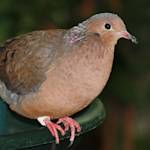Spix's macaw
2022 CE • Brazil
"The Spix’s macaw – named in honour of the German biologist Johann Baptist Ritter von Spix, who first collected a specimen in 1819 – became the victim of a double environmental whammy that began in the 19th century. As farming spread across South America, the parrot’s homeland – in an area of shrubland and thorn forest known as the Caatinga in north-east Brazil – was overgrazed by goats and other livestock. The land was severely eroded, and macaw numbers dropped as their habitat was destroyed." As the Spix's macaw became more rare, collectors jumped on the opportunity to try to get their hands on those left in the wild. By the 1990s, only one bird was found in the wild. "Twenty years ago, the future of the Spix’s macaw could not have looked bleaker. The last member of this distinctive parrot species disappeared from the wild, leaving only a few dozen birds in collectors’ cages across the globe. The prospects for Cyanopsitta spixii were grim, to say the least. But thanks to a remarkable international rescue project, Spix’s macaws – with their grey heads and vivid blue plumage – have made a stunning comeback. A flock now soars freely over its old homeland in Brazil . . ."
Quote: Robin McKie, "‘Extinct’ parrots make a flying comeback in Brazil", The Guardian, July 10, 2022.
Kai Kupperschmidt, "A Wild Hope," Science, June 9, 2022.
Image: Joseph Smit, Public domain, via Wikimedia Commons


Learn about Maya Lin’s fifth and final memorial: a multi-platform science based artwork that presents an ecological history of our world - past, present, and future.

Discover ecological histories and stories of former abundance, loss, and recovery on the map of memory.

Learn how we can reduce our emissions and protect and restore species and habitats – around the world.

See how art can help us rethink the problems we face, and give us hope that each one of us can make a difference.

Help make a global memorial something personal and close to home. Share your stories of the natural world.


